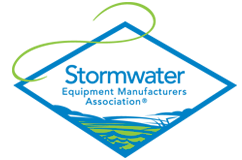- Home
- Who We Are
- Advocacy
- Stormwater Basics
- BMP Maintenance
- BMP Systems
- BMP Fact Sheets
- BMP Suppliers
- Biofiltration Soils
- Catch Basin Insert
- Construction Site BMP
- Debris Separator
- BMP Maintenance Suppliers
- Flow Restrictor and Regulator
- Hydrodynamic Separator
- Modular Dentention and Retention Systems
- Oil Water Separator
- Permeable Pavers and Permeable Asphalt Products
- Pretreatment Devices
- Rain Water Harvesting
- Spill Control and Containment Systems
- Stormwater Filtration System
- Stormwater Trash Debris Netting
- Tree Box Filter
- Stormwater Science
Who should Inspect/Maintain a BMP System?The inspection and maintenance of a stormwater system falls into two general categories: routine and major. There are various terms for these two general types, but routine inspection and maintenance generally does not involve heavy equipment or confined space entry and the skills needed to perform routine work are easy to learn or already known. Items that are considered routine are picking up trash, mowing observing erosion problems and other simple tasks. Often a site owner can perform some of these tasks or hire landscaping professionals to complete them. When routine inspection and maintenance tasks are not done and problems are ignored they can turn into major tasks. A professional or jurisdictional inspector is required to assess the performance of routine tasks and to determine whether or not major maintenance is provider is required. Professional stormwater maintenance providerThere are many types of land based and manufactured BMPs and the tasks associated with performing inspections and maintenance for all these different types can vary greatly. While it is possible that a single provider may have all the equipment and skills to perform every task, it is more likely that more than one provider may be needed to cover every type of BMP encountered. Many good providers will subcontract certain tasks such as tree removal or dredging that are a part of an overall maintenance operation. No matter what the task at hand, there are certain characteristics that should be present in a professional stormwater maintenance provider. Characteristics of a good provider
The idea behind listing these characteristics is to help identify providers that understand that while some of the tasks involved with stormwater inspection and maintenance may be routine, some activities are very dangerous. This is especially true when stormwater is flowing or when activities are underground. Providers that can satisfy the characteristics on the list above are more likely to be able to perform the tasks involved safely and to the owner's satisfaction. A provider does not have to be large or have expensive equipment to be qualified or effective, but it should be recognized that some tasks will require a larrge and versatile provider.
|

